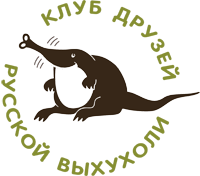Библиотека
 На главную страницу библиотеки
На главную страницу библиотеки
Beobachtungen am Pyrenaen-Desman, Galemys pyrenaicus
Field observations during the trapping of 27 specimens of the Desman (Galemys pyrenaica) as well as the study of one Desman kept in captivity for 20 months yielded the following information: (1) Galemys pyrenaica rufula tends to be a trifle larger than the nominate subspecies, however the measurements overlap, and the coloration of the fur depends on the lenght of time it has been worn. (2) Contrary to what is found in Talpa, there is no sexual dimorphism in Galemys. (3) The distribution, still incompletely known, is possibly disjunct. The upper limit of the Desman's range in the mountains was located at 1.800 meters. (4) In the wild the Desman feeds principally on rheophilous insect larvae. The captive individual readily accepted mice, fishes and other vertebrates, mussels (Anadonta), earthworms, and mealworms. Housed in an aquaterrarium it captured small fishes very quickly by diving. When fed an exclusive diet of laboratory mice the Desman ate 14—21 g per day. (5) It consistently started its meal by eating the heads of the mice or fish offered. Larger prey was carried into a hide, where part of it was eaten at once, the rest being buried and eaten later on. A day-old mouse was eaten in less than 2 minutes. (6) Brushing the fur by means of the claws of the hind foot was an important maintenance behaviour. It is still unknown why the fur of the captive Desman, like the plumage of captive diving birds, tends to become wet. This regularly leads to the death of the animals. (7) The Desman slept in a subterraneous hide. Larger pieces of prey were swallowed in another hide. The excrements were deposited in a fixed place, a rock ashore. (8) In swimming and diving the hind feet provided the driving force with alternate movements, while the forelimbs were extended forward and held motionless. (9) The few and rarely uttered sounds known to date are described. (10) A sleeping den was molded in plant debris, and nesting material consisting of grasses and dead leaves was carried into the nest by means of the mouth. (11) The Desman discriminated between light and dark; it seemand to hear well and recognized various sound signals. Its taste for bitter, sour, and sweet appeared poorly developed. Its sense of smell proved to be of doubtful quality, but its sense of touc (12) The trunk of the Desman is a most sensitive organ equiped with touch receptors. It helps to guide and orientate the animal when moving about, consist¬ently checking the substrate. As a most flexible muscular organ the trunk is of great assistance when prey is captured, carried, and eaten, and when nesting material is hauled in

Ошибка




